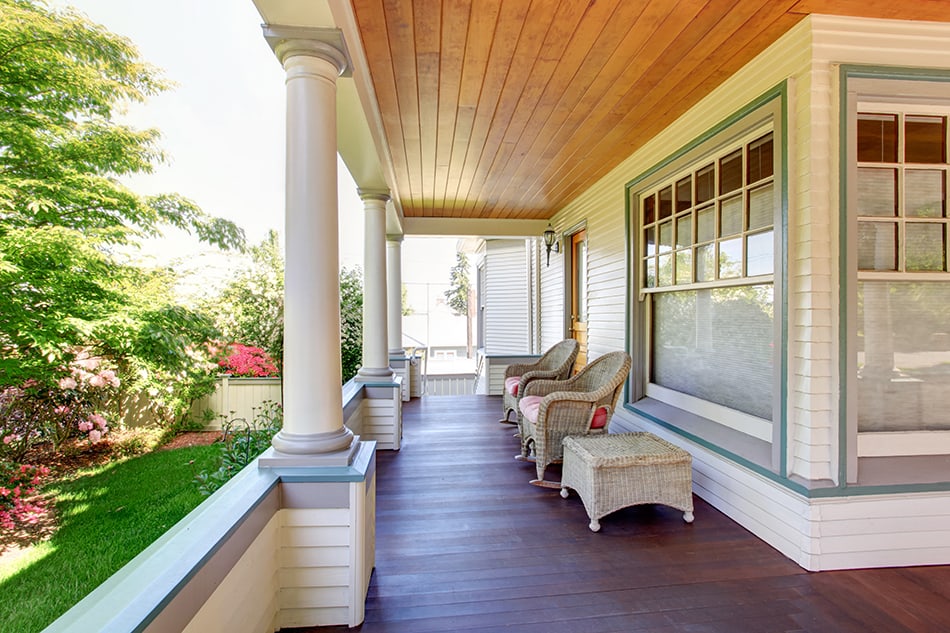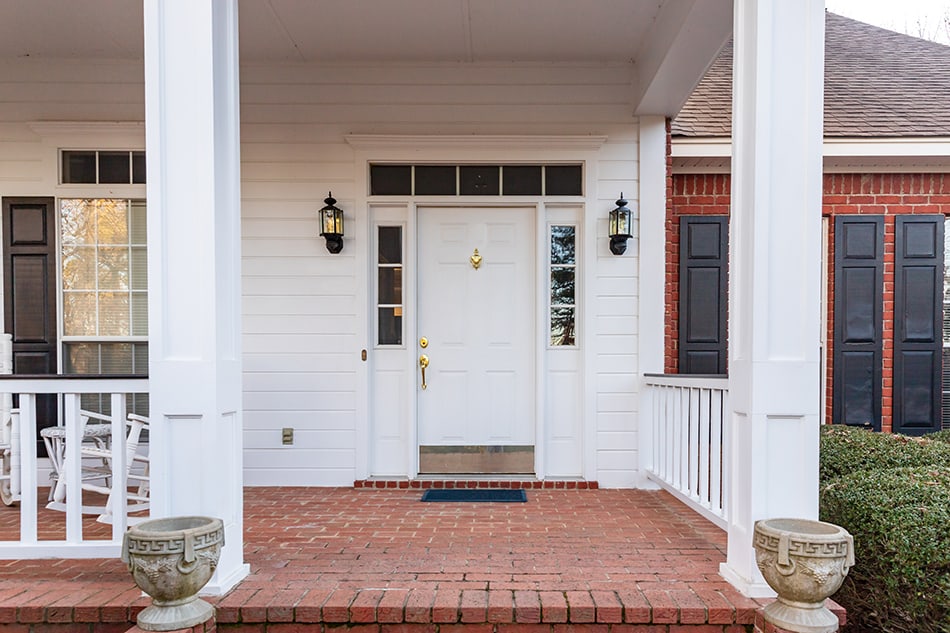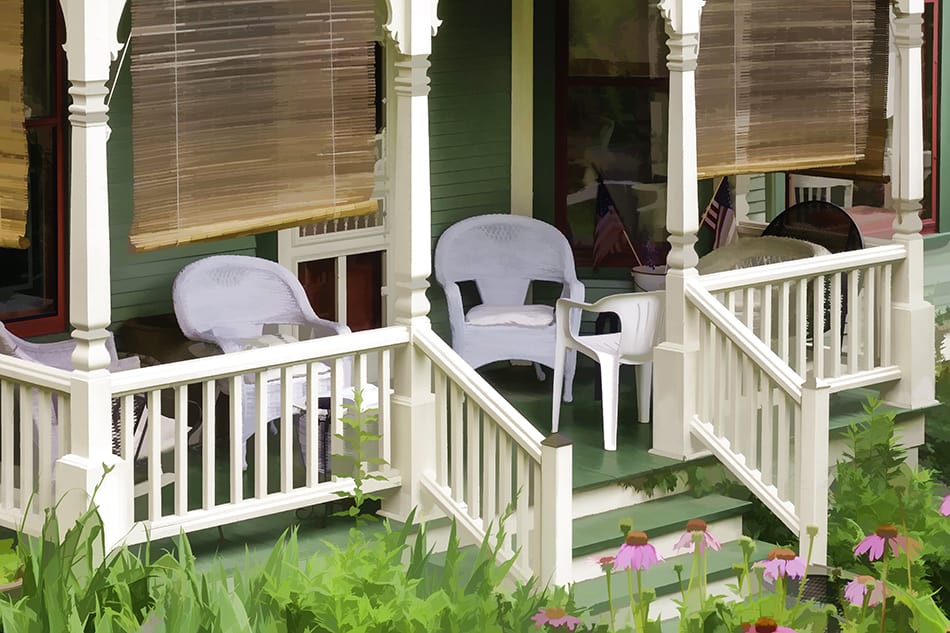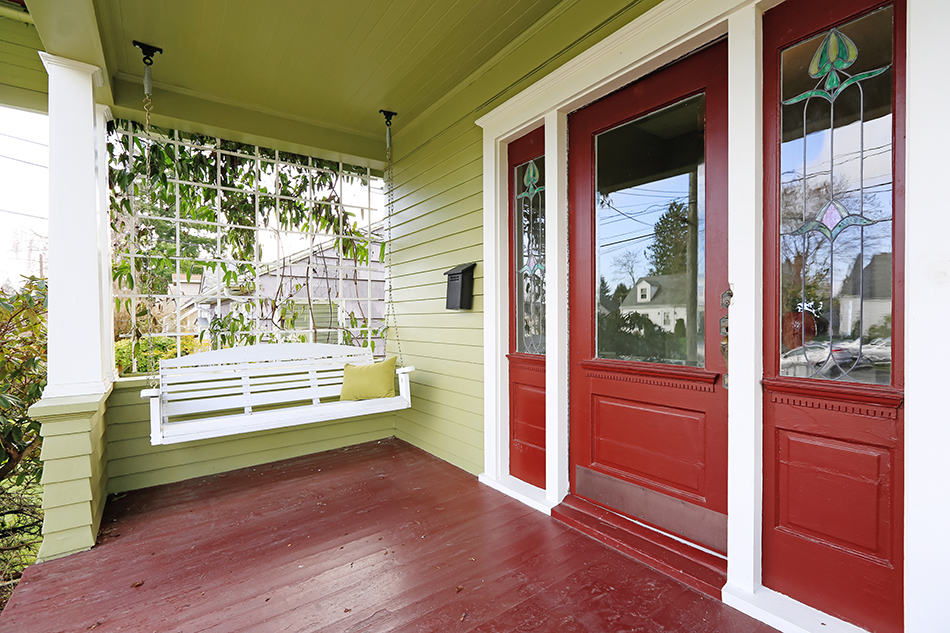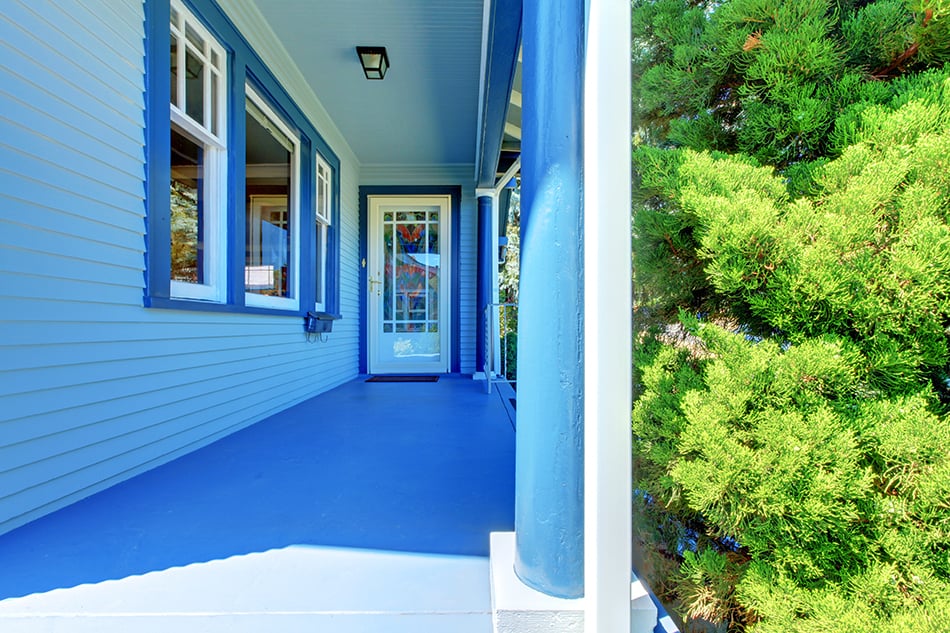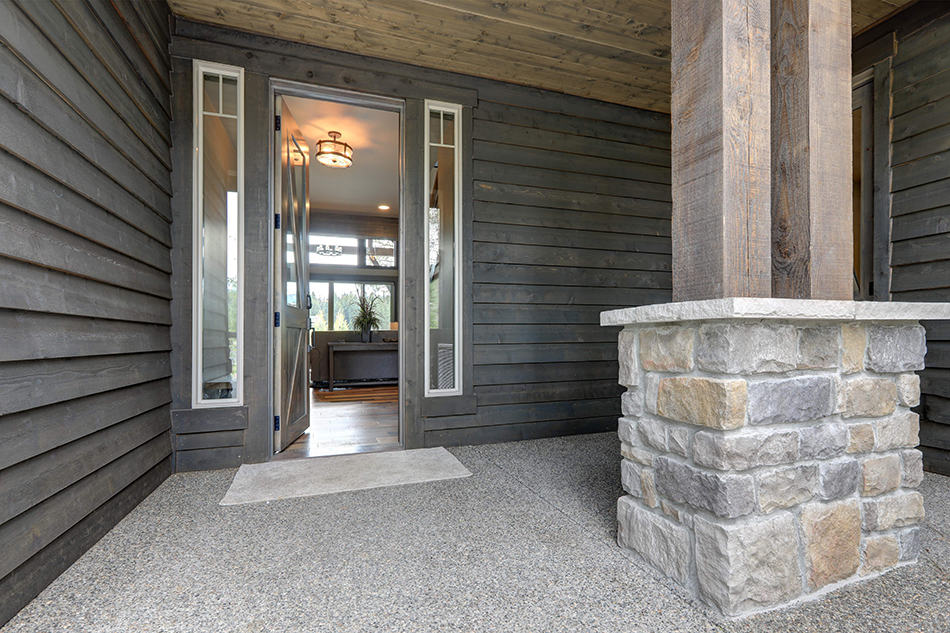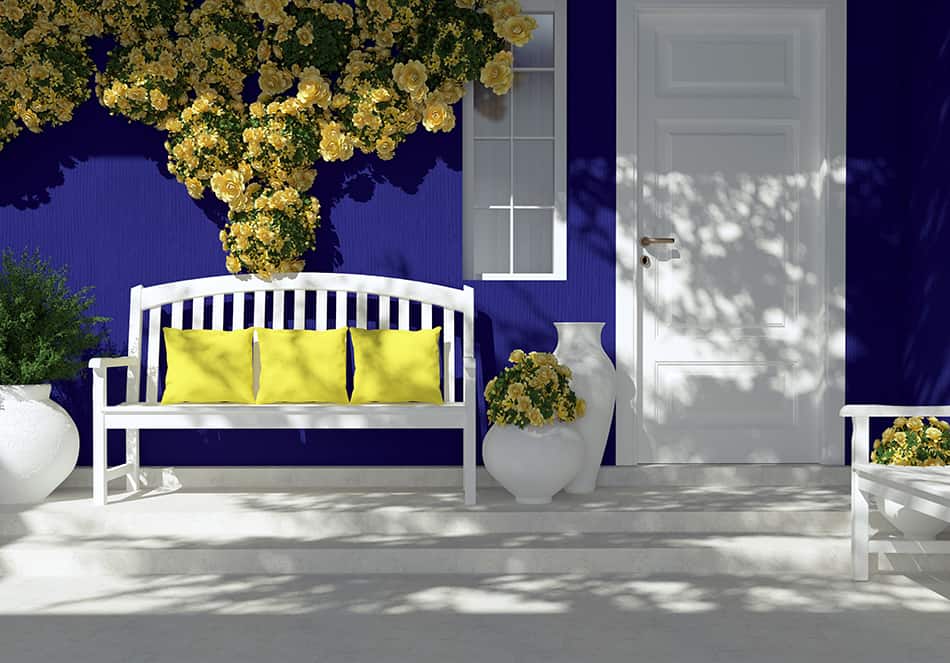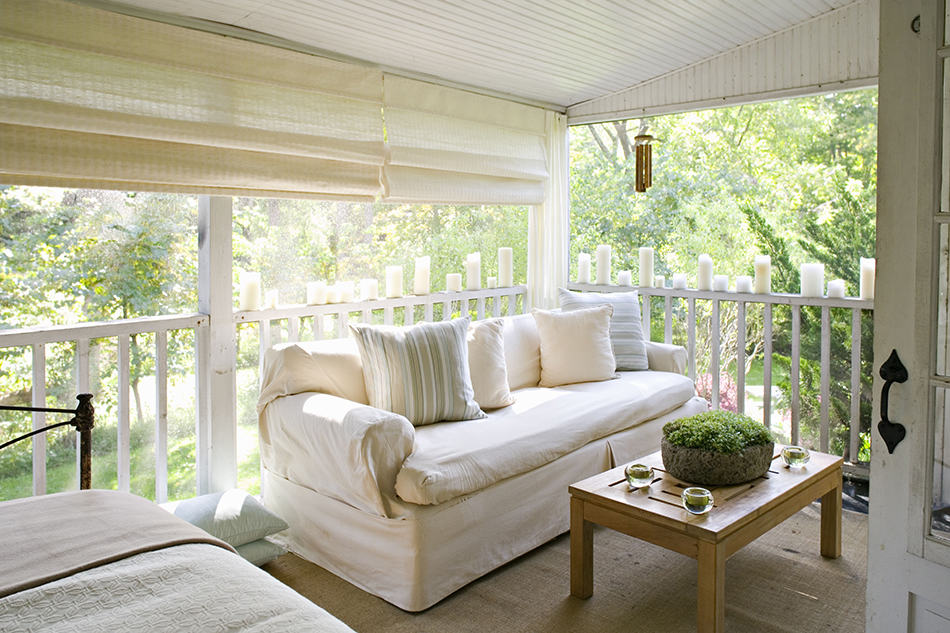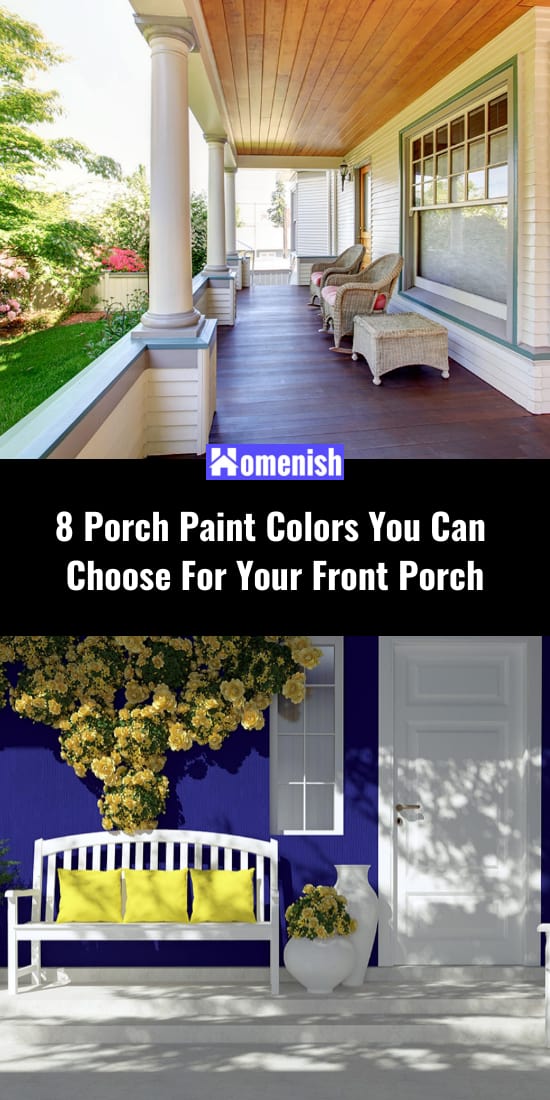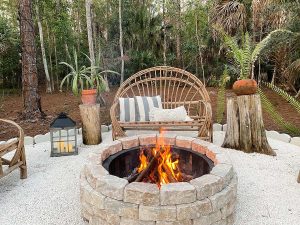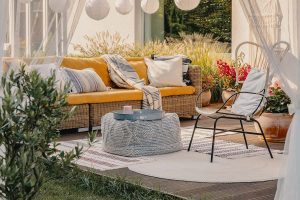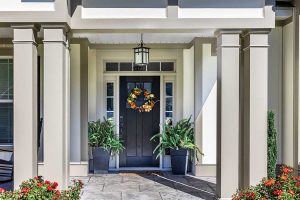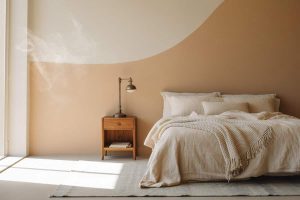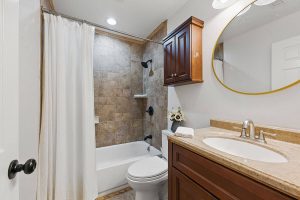A home’s front porch is supposed to be a quintessentially fun part of the house. It’s rarely a good place to set up your home office or study – instead, it should be the backdrop of your quiet summer evenings or a place to continue the conversation after a dinner party.
A good front porch should be breezy, comfortable, and cozy. However, it is also one of the house’s main architectural details, and it’s responsible for a large part of its curb appeal. Because of this, your front porch should appear welcoming ad provide a good first impression – but depending on where you live, you may not be able to let your imagination fly wild when choosing a color.
So, what are the established options for a front porch’s color? And how can you choose which one is best for your home?
Choosing your Front Porch Color: A Quick Style Guide
Generally, most front porches tend to be white, green, gray, or blue. Some quaint beach towns and historical neighborhoods may rise to fame thanks to their bright palettes, but even in such cases, you will probably find front porches sticking to muted, matte tones.
After all, these are the colors that best evoke nature, sun, and tranquility. Fortunately, matte tones are not the same as limited tones. Here are some of the options you have at your disposal.
Classic White
When it comes to color, there is no such thing as an “absolute white” – or at least not one that is feasible for exterior décor. Nevertheless, a classic white porch is one of the most popular options across the country. It goes well with old or vintage colonial-style homes.
If you live in a hot area, a classic white or “white linen” coat of paint will help reflect off the heat. The resulting look is also particularly favored by Homeowner Associations or for semi-detached homes: it provides the appearance of neatness that meshes well with uniform or orderly looks.
If you feel constrained by local regulations, a classic white porch is also a great excuse to bend the rules a little bit. Just add some more vibrant details or accents, such as green windowsills or even a faint blue porch ceiling. This will give your home a very summery look.
Grayish Greens
Think of evergreen forests close to the deepest part of the winter or the endless amounts of space provided by a peaceful meadow. Grayish greens are a great option for homes surrounded by greenery, either in standalone gardens or in exurban areas.
This is a great color option if you are fond of light wood furniture or if you want to highlight some brighter accents in yellow or orange hues. This color is a great way to escape the classic white or pale grays while still remaining luminous enough to feel inviting during the fall.
Muted Greens
If you add an extra splash of white to your grayish-green and balance it with beige surroundings, you will get a muted shade of green similar to that of an aged, mossy log.
This color will look less foresty and a little bit more urban than its predecessor. This will make it easier to combine other muted or pale colors in the vicinity – especially those that you have no control over. Because of this, muted greens can be a great option in the suburbs when you need to ensure your curb appeal complements that of your neighbor’s.
Finally, this lighter hue will also keep your front porch luminous, even if it is facing the sharper southern lights.
Summer Blue
Don’t be fooled by the word “summer,” as we have not reached quite the bright Mediterranean side of the color scale yet. The idea behind this summer blue is to evoke the blue skies of a summer morning, not those of noon.
By keeping the shade warm but still light, you will prevent your porch from feeling smaller. Consider this color if you are fond of nautical elements in your décor or if your porch furniture steers towards natural fibers and crude colors.
Finally, summer blue colors also double as a great porch floor color if you are not feeling bold enough to paint the entire piece just yet. Just make sure to add yellow or warm lights around the porch, and you should be able to extend the summer feel for a few more weeks.
Underwater Gray
Underwater grays are pretty close to blue and often feel like a midpoint between steel and summer blue. However, the cooler tones of underwater gray make it ideal if you are seeking to contrast the surrounding nature rather than to blend amidst it.
This color works very well for a home with a more modern or contemporary design. If your house has a lot of exposed elements, such as bricks or terracotta, this color will highlight them as a deliberate choice. It also works great in northern landscapes: even if it may be too cold to hang out here during the winter, your front porch will look as great in December as it does in August.
Night Blues
Also known often as deep blues, these darker shades provide a bold alternative to classic creams and pale grays. However, blue remains a soothing and fresh color that will inspire relaxation.
If you choose a more luminous variant of night blue, do consider the need to keep any accents or details light. Resist the temptation to add any bright, sunny shades around it, as it may accidentally make the porch feel smaller instead.
However, this color will look great on glass-covered porches or close to wide skylight windows. These details will enhance the semi-industrial appeal of the building and balance the relative darkness of a night or deep blue porch.
Cream
Although it doesn’t have the crisp luminosity of white, cream paint is an understated classic that can adapt itself to a variety of decorative styles.
Besides, creams generally age better than white paint, especially if you live in a very hot or humid region. This may help you stave off a new coat of paint for up to an extra year, provided you keep everything clean or have a lot of shrubberies immediately around the porch.
If you want to experiment a little bit, you can also break the monotony with a single, very bright accent – such as a red door or sunny windowsills.
The Same Color as Your House
Probably the safest choice of all, painting your porch the same color as your house will ensure the overall composition is aesthetically pleasant and balanced. Depending on your surroundings, this may be a great way to detract attention from your front porch, and therefore to keep your neighbor’s prying eyes away from your gatherings.
The main drawback here is that keeping the porch color the same as the rest of your house may make it feel small or stifling, as it won’t be as psychologically separated from the “work” parts of the house. You can improve the porch’s airiness and feel by playing with the surrounding details. As a general rule, your porch’s floor should be at least two sides darker than the walls, and the ceiling should be slightly lighter.
Tips for Choosing a Harmonious Porch Color
Even if we are going for bold, contemporary styles, one of the goals of architecture will always be to ensure a building looks esthetically pleasing and well-connected to its surroundings. This is why choosing exterior décor elements is often a difficult task: even if an idea may sound great on paper, it can later be hard to pinpoint why it feels off.
The following tips should help you choose a color that adds to your curb appeal rather than detract from it:
- If your home is in the middle of a garden or lawn, look at the vegetation around it. If you have lush, deep green trees, your porch will look better if painted with a darker, grayish-green. Lawns and sparse shrubbery will look better on a white or cream porch.
- Consider which direction your porch is facing. Lights coming from the south tend to be warmer than those coming from the north. If your porch faces south, stick to lighter shades that will compensate for this extra luminosity.
- Don’t ignore the porch’s floors. They don’t need to be the same color as the walls, and in many cases, they shouldn’t. Gray or summer blue porches will be better complemented by colorful tiles that offer extra contrast.
- Nothing beats a visual example. Many paint retailers now offer simple simulators that offer a preview of your desired colors. You will need to upload a clear picture of your front view or curb and then experiment with different paint colors or floor materials.
In Conclusion
Functionally, your front porch is supposed to be a great place to hold small gatherings, barbecues, or impromptu cocktails. However, you will probably be using this space to unwind or to watch an afternoon go by. Ensuring it looks just right will therefore help you own the space and will add to the overall property value – and even the desirability of your entire block!
